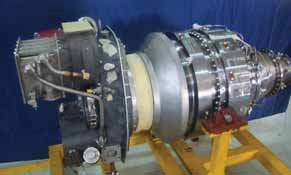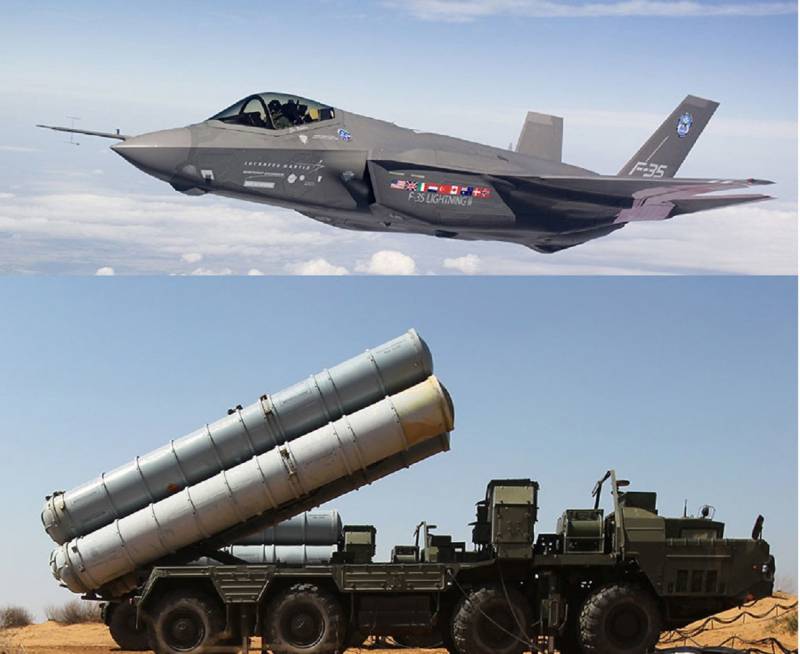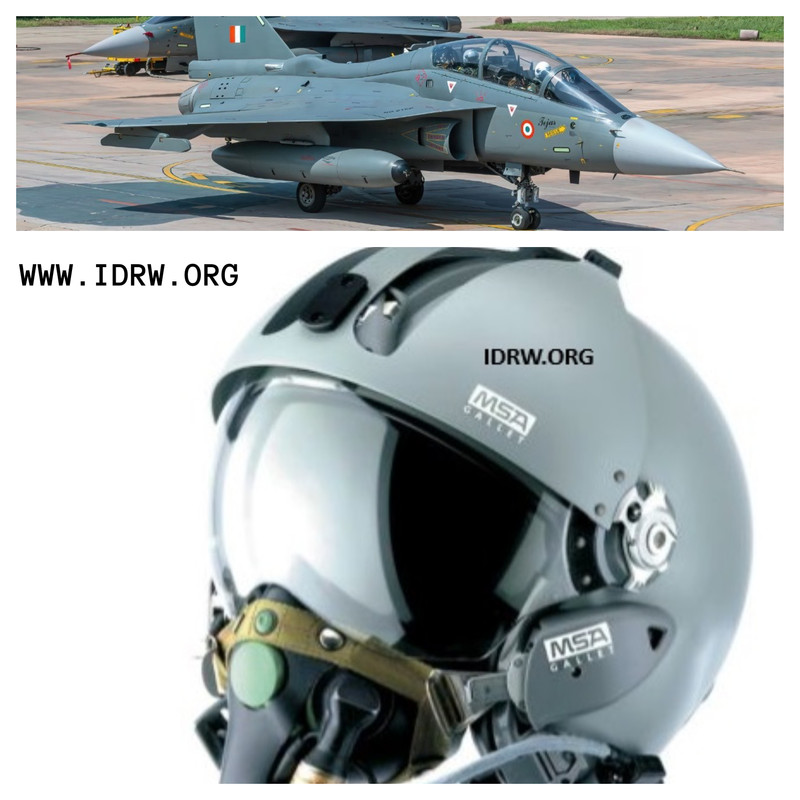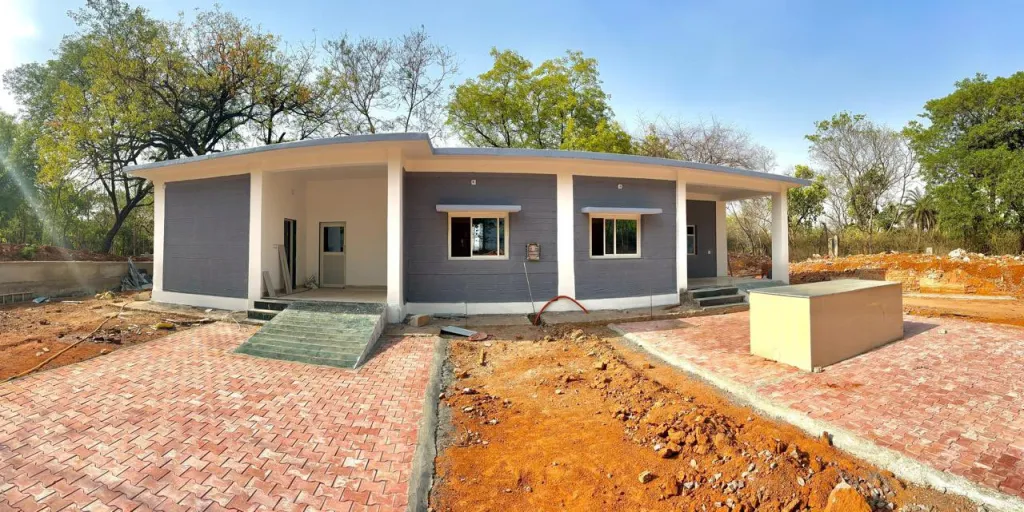SOURCE: RAUNAK KUNDE / NEWS BEAT / IDRW.ORG

The indigenously developed Akash Air Defense System, developed by the Defence Research and Development Organisation (DRDO), has become the go-to system for the Indian Air Force (IAF) to protect strategic and forward airbases across the country.
The Akash system has gradually replaced the Spyder Air Defense System, acquired from Israel, at several forward airbases. The IAF’s Akash launcher features a detachable trailer, towed by a Tata truck, allowing for autonomous positioning. Designed in collaboration with Larsen & Toubro, the Air Force launcher incorporates a set of missiles, a control center, a built-in mission guidance system, and C4I (command, control communication and intelligence) centers.
Continue readingSOURCE: RAUNAK KUNDE / NEWS BEAT / IDRW.ORG

Hindustan Aeronautics Limited (HAL) inching towards a significant milestone in its indigenous engine development program. The company that had commenced Limited Series Production of the HTSE-1200 engine, sometime back that is set a powerful turbo-shaft powerplant designed to propel medium-sized helicopters.
The first batch of HTSE-1200 engines is expected to be delivered by mid-2025. Currently, 5 HTSE-1200 engines are in the fabrication stage, with the first engine slated for delivery next year.
Continue readingSOURCE: RAUNAK KUNDE / NEWS BEAT / IDRW.ORG

India is poised to make significant strides in aerospace technology with its ambitious plan to incorporate domestically produced parts and metallurgy into the Russian-supplied AL-31F jet engine used on the Su-30MKI platforms.
A hybrid technology demonstrator featuring enhanced Indian-made components, initially developed for the Kaveri engine program, is set to emerge in 2025. These components will replace inferior Russian counterparts, marking a major step towards self-reliance in engine technology.
Continue readingSOURCE: AFI

The Biden administration has sent a clear message to New Delhi: no weapons system or hardware is off the table when it comes to strengthening India’s defence capabilities. In a significant move to demonstrate this commitment, the U.S. government offered India two of its most advanced missile defence systems, the MIM-104 Patriot and the Terminal High Altitude Area Defense (THAAD), in an attempt to dissuade India from purchasing the Russian S-400 air defence system. Despite the U.S. offer, India went ahead with the S-400 acquisition, a decision that has not deterred the Biden administration from pursuing deeper defence ties with New Delhi.
The MIM-104 Patriot is a surface-to-air missile (SAM) system that provides medium-range, high-altitude air defense capabilities against a wide range of threats, including tactical ballistic missiles, cruise missiles, and advanced aircraft. The THAAD system, on the other hand, is an advanced anti-ballistic missile defense system designed to intercept and destroy short, medium, and intermediate-range ballistic missiles during their terminal phase of flight. Both systems are among the most sophisticated and capable in the U.S. defense arsenal, reflecting the seriousness of Washington’s desire to engage India as a strategic defense partner.
Continue readingSOURCE: AFI

The Indian Defence Ministry is reportedly considering a deal worth around USD 3.1 billion with US-based General Atomics for the acquisition of an unspecified number of unmanned aerial vehicles (UAVs). While the Ministry has remained tight-lipped about the specifics of the deal, it is understood that the Cost Negotiation Committee (CNC) has finalized the pricing.
The Defence Ministry is now set to approach the Finance Ministry for expenditure approval before seeking the final nod from the Cabinet Committee on Security (CCS). If the deal is not signed by October 31, the manufacturer has indicated that there could be a price revision.
Continue readingSOURCE: AFI

The Defence Research and Development Organisation (DRDO) is on the verge of selecting an industry partner for the development of an Electro-Magnetic Launch System (EMALS). This advanced technology will be capable of launching projectiles at speeds exceeding Mach 6, revolutionizing how aircraft and other payloads are launched from naval platforms. The EMALS system, which will be compact and designed in a mobile configuration, marks a significant leap in the Indian Navy’s modernization efforts, especially for future aircraft carriers.
DRDO’s Research & Development Establishment (Engineers) [R&DE(E)], which is leading the project, has already made significant strides in developing a scaled technology demonstrator. This demonstrator has successfully launched payloads of up to 400 kg, equivalent to the weight of a UAV, over a short distance of 16 to 18 meters. This achievement proves the viability of the technology and sets the stage for further development.
Continue readingSOURCE: AFI

As the war in Ukraine rages on, there is an increasing demand for artillery, tank, and mortar shells. To meet this demand, Western countries have been sourcing ammunition from various sources around the world, including India.
One of the most intriguing sources of ammunition for Ukraine has been India, which was likely one of the non-EU suppliers for the Czech ammunition initiative. Photos of Indian-made tankers with high-explosive fragmentation ammunition have become more frequent in Ukraine.
Continue readingSOURCE: IDRW.ORG TEAM

India is closely monitoring Chile’s shipbuilding program and is keen to offer its expertise and capabilities to potential collaborations. A Chilean delegation is expected to visit Indian shipyards to explore opportunities for joint production with Astilleros y Maestranzas de la Armada (Asmar).
Both Chile and India operate Scorpène-class submarines, built by Naval Group. Chile’s Scorpène-class submarine, O’Higgins (SS-23), was constructed by DCNS in Cherbourg and Navantia in Cartagena, Spain.
Continue readingSOURCE: IDRW.ORG TEAM

India’s ambitious plans to become a major defense exporter are being hampered by the slow pace of warship construction within the country. While the Indian Navy has made significant strides in modernizing its fleet, the lengthy shipbuilding timelines have hindered its ability to compete effectively in the global defense market.
A key factor contributing to the slow construction times is the complexity and scale of Indian warships. Projects like the P17A frigate, for example, have taken an average of 78 months from block erection to the start of sea trials. This is significantly slower than comparable warships built by other navies. The Chinese PLAN Type 054B FFG frigate, for instance, takes only 12 months from block erection to sea trials, while the JMSDF 25DD frigate takes 19 months and the French MM FREMM frigate takes 32 months.
Continue readingSOURCE: AFI

In a notable development, Indian Air Force (IAF) pilots flying the Final Operational Clearance (FOC) variant of the Light Combat Aircraft (LCA) Tejas Mk1 fighter jets have been seen donning the MSA Gallet LA 100 helmet for the first time. According to sources at idrw.org, a tender to procure these advanced helmets for the Mirage and LCA fleet was floated in 2022, marking a significant upgrade in pilot safety and comfort.
The MSA Gallet LA 100 helmet is specifically designed for jet aircraft pilots performing combat missions or aerobatic flights, where the use of an oxygen supply and an ejection seat is critical. Its lightweight yet durable construction enhances performance in demanding flight conditions while maintaining high levels of protection.
Continue readingSOURCE: AFI

India’s upcoming generation of ballistic missile submarines (SSBNs), the S5 class, is set to significantly bolster the country’s nuclear deterrence capabilities. These submarines will feature a substantial increase in the number of launch tubes, accommodating a larger arsenal of submarine-launched ballistic missiles (SLBMs).Both S4 and S4 Star submarines are already on outer docks getting final fitments with S5 design phase nearing end, program is set to get official sanction soon.
The S5 class SSBNs are expected to have 12 or more launch tubes, a significant upgrade from the current Arihant-class submarines, which have only 12 tubes. This increased capacity will allow India to deploy a larger number of K5 and K5 SLBMs, which are currently under development. These missiles are designed to carry multiple nuclear warheads over long distances, providing India with a potent nuclear deterrent.
Continue readingSOURCE: AFI

Lockheed Martin, a global leader in aerospace, defense, and security solutions, is gearing up to host the 10th edition of its India Suppliers Conference in Bengaluru on September 11-12, 2024. This significant event comes just ahead of Prime Minister Narendra Modi’s visit to the United States later in the month, marking a pivotal moment in India-US defense relations.
The conference will be inaugurated by Priyank Mallikarjun Kharge, Karnataka’s Minister for Information Technology and Biotechnology, and Christopher W. Hodges, the US Consul General in Chennai. Their presence underscores the diplomatic importance of this event and its potential to strengthen bilateral ties.
Continue readingSOURCE: AFI

In a groundbreaking move, the Indian Army has inaugurated its first on-site 3D-printed construction at the Military Hospital in Jhansi Cantonment. This innovative project, a joint endeavor by the Military Engineer Services (MES), the Indian Institute of Technology (IIT) Hyderabad, and Simpliforge Creations, represents a significant leap forward in the Army’s technological advancements.
The 3D-printed construction technology offers several advantages, particularly in addressing the logistical challenges posed by remote and inaccessible areas. By eliminating the need to transport large quantities of building materials to construction sites, this technology can significantly reduce construction time and costs. Additionally, 3D printing allows for greater adaptability to diverse environmental conditions, making it a valuable tool for infrastructure development in challenging terrains.
Continue readingSOURCE: AFI

Exercise Tarang Shakti 2024, a significant multilateral air exercise held in India, showcased the impressive capabilities of participating fighter jets, including the Eurofighter Typhoon and the Indian Su-30MKI. A video that has gone viral captures a thrilling moment during the exercise, where a Typhoon and an Su-30MKI engaged in a simulated dogfight.
In the video, the Eurofighter is seen maneuvering aggressively in an attempt to achieve a radar lock on the Su-30MKI, a critical step in simulated air-to-air engagements. However, the Indian Su-30MKI swiftly executes a tight right-hand turn, evading the Typhoon’s lock-on attempt with impressive agility. This visual demonstration of the Su-30MKI’s supermaneuverability highlights the aircraft’s prowess in close-combat situations, known as within visual range (WVR) dogfights.
Continue readingSOURCE: RAUNAK KUNDE / NEWS BEAT / IDRW.ORG

ThyssenKrupp Marine Systems (TKMS) has completed a critical design review (CDR) for its radical new submarine concept, featuring “Stealth Shaping,” which was previously unveiled for the Indian Navy’s P-75I program. The concept, inspired by the Type-212CD submarines currently under development for Germany and Norway, demonstrates the maturity of the design and its potential to meet the Indian Navy’s stringent requirements.
The CDR involved a comprehensive review of over 100,000 pages of documentation to ensure the design met approximately 6,000 contractual requirements, according to the German Ministry of Defense. The Type 212CD design is a significant advancement over its predecessor, the Type 212A, and while the specific variant offered to India is yet to receive an official designation from TKMS, it is based on the core principles of the Type 212CD.
Continue reading